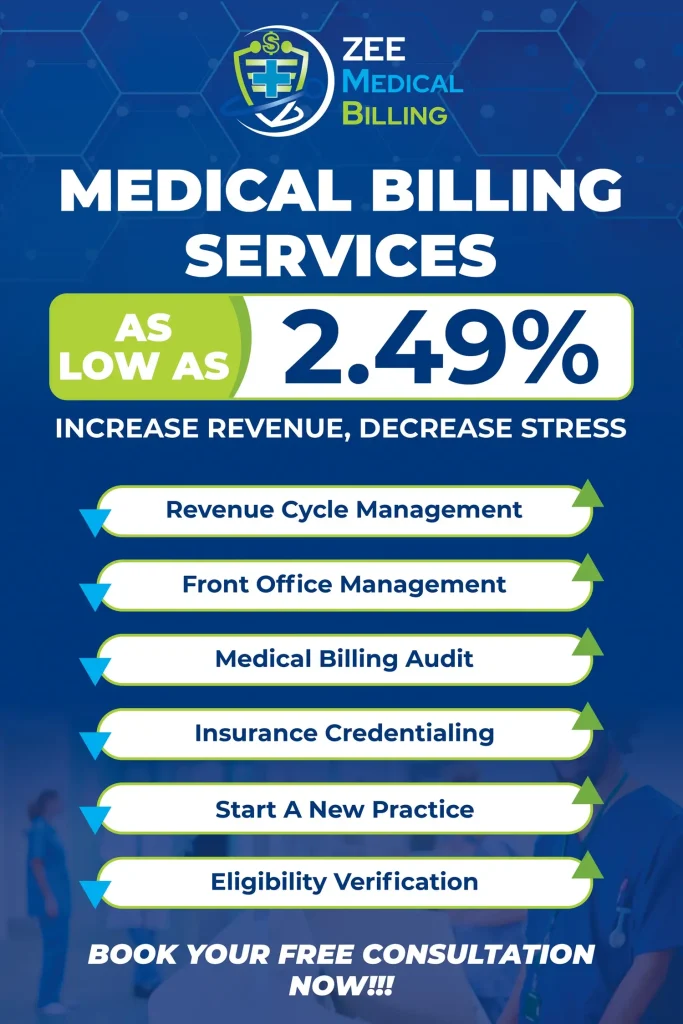Accurate patient statistic data plays a pivotal part in guaranteeing the smooth working of the medical billing process. Mistakes or incomplete information can have far-reaching results, including claim denials, postponed reimbursements, and indeed compliance issues. Healthcare suppliers, payers, and billing experts depend on exact patient details to avoid disturbances in service delivery and revenue era. Below, we investigate the significance of precise patient demographics in medical billing and its effect on the general healthcare system.
1. Guaranteeing Insurance Verification And Claim Accuracy
The establishment of medical billing begins with the section of patient demographics. Correct details, such as the patient’s title, date of birth, insurance arrangement, approach number, and contact data, are essential for protection confirmation. Protection companies depend on this data to decide whether the services given are secured under the patient’s plan. If the statistical data is incorrect, the insurer may dismiss or delay claims, leaving both the understanding and the supplier in a frustrating situation.
- Insurance policy confirmation: Guaranteeing that the correct arrangement numbers and insurance plan details are entered avoids claim rejection or misprocessing.
- Preventing errors in scope: Botches in statistical data may lead to claims being sent to the wrong protection supplier or being categorized incorrectly, which can delay payment.
Read More: Understanding Patient Responsibility In Medical Billing
2. Facilitating Timely Reimbursement
Accurate patient demographics guarantee that the billing process runs easily, which in turn speeds up reimbursement from insurance companies. Claims that contain errors or disparities, such as a misspelled title or incorrect protection number, are regularly delayed or rejected. This not only causes financial strain on healthcare suppliers but also influences the patient’s care continuity.
- Faster claim approval: When accurate data is submitted, claims are prepared more rapidly, ensuring timely reimbursement for healthcare administrations rendered.
- Reduction in claim denials: Healthcare organizations that keep up accurate statistical information regularly see lower rates of claim denials, improving their overall revenue cycle.
3. Avoiding Fraud And Identity Theft
Accurate patient demographics are basic for anticipating fraud and identity theft in the healthcare industry. Wrong or misrepresented data might result in fraudulent claims, either by misrepresenting the character of the persistent or by utilizing inaccurate coverage details.
- Fraud prevention: Exact patient information guarantees that claims are submitted for the right individual and that the services given are legitimate.
- Identity theft assurance: Using the correct patient title, birthdate, and insurance data makes a difference in safeguarding against identity theft, which has gotten to be an expanding issue in the healthcare sector.
4. Ensuring Billing Compliance And Reducing Errors
Medical billing requires strict adherence to directions, such as the Health Insurance Portability and Accountability Act (HIPAA), which commands the security of patient data. Billing experts must guarantee that persistent demographics are rectified not only to encourage reimbursement but moreover to comply with legal and moral standards.
- Coding accuracy: Patient age, gender, and medical history are frequently key variables in deciding the redress coding for medical services. Mistakes in demographic details can lead to wrong coding, which can result in overbilling or underbilling, or indeed, potential legal consequences.
- Regulatory compliance: Billing botches due to wrong demographics can lead to non-compliance with government directions and protections, company policies, putting healthcare suppliers at risk of fines or audits.
5. Improving Communication And Patient Engagement
Accurate demographic data empowers healthcare providers to communicate effectively with their patients, leading to improved patient fulfillment and care results. If patient contact details, such as phone numbers or addresses, are incorrect, it can lead to missed appointments, delayed medications, and troubles in reaching patients for follow-ups.
- Appointment scheduling: Correct contact details help guarantee that patients are reminded of appointments and can be contacted for rescheduling if needed.
- Follow-up care: Accurate demographic data is too important for managing follow-up care and guaranteeing that patients are contacted for essential checkups or treatments.
6. Enhancing Revenue Cycle Management
Revenue cycle management (RCM) is the process through which healthcare organizations oversee the financial perspectives of persistent care, including billing, coding, and repayment. Exact patient socioeconomics are an indispensable portion of this process. Guaranteeing that all the significant data is correct from the beginning reduces the chances of claim rejection, resubmission, and delayed payments, which can move forward the cash stream for healthcare providers.
- Efficient income cycle: By eliminating mistakes in demographic information, healthcare organizations can streamline the billing process, improving overall financial performance.
- Lower denial rates: Exact information directly relates to a reduction in the denial rates of claims, which in turn leads to improved financial steadiness for healthcare providers.
Read More: Top 5 Common Medical Billing Mistakes and How to Avoid Them
7. Preventing Delays In Care And Financial Strain
Incorrect patient demographic data can lead to delays in the delivery of care. Wrong billing details may cause delays in confirming protection scope or processing claims, driving patients to be charged out-of-pocket for services that should have been secured by insurance.
- Billing disputes: Incorrect data may result in billing disputes that advance delayed care or lead to unexpected costs for patients.
- Financial burden: When billing issues emerge due to incorrect patient demographics, healthcare suppliers risk delays in installments, which can result in financial hardship for the practice or hospital.
Conclusion
Accurate patient demographics are pivotal in keeping up an efficient and smooth medical billing process. By guaranteeing that the redress data is captured and entered into billing frameworks, healthcare suppliers can anticipate issues such as claim denials, delayed reimbursements, and fraud. In addition, accurate information advances compliance with administrative standards, reduces errors, and improves the patient experience through progressed communication and timely care delivery. In the profoundly complex and controlled healthcare environment, precise patient demographic information is not just a necessity; it is a key driver of financial and operational victory.









